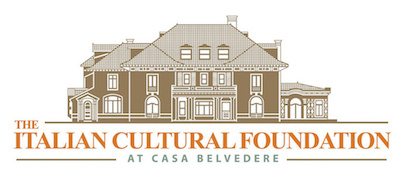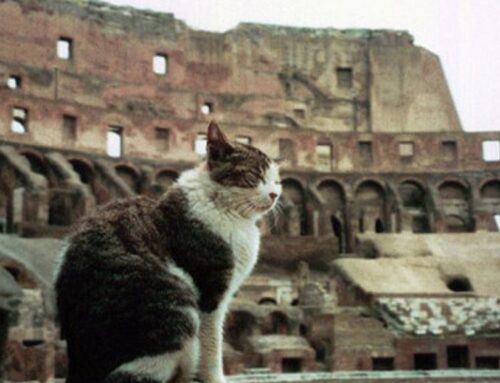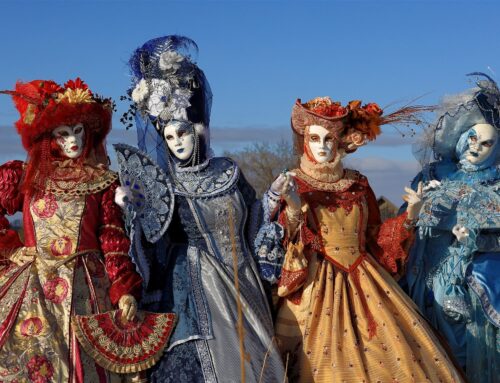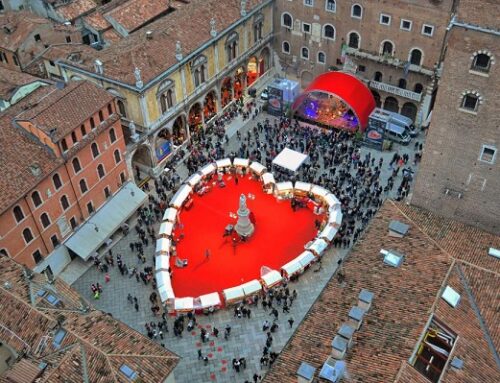By Beatrice Alecci, Program Director for the Italian Cultural Foundation at Casa Belvedere
Some vacations are planned to visit family. Other vacations are to see new sights. My summer vacation this year was a journey that combined both. In my hometown of Vetralla in central Italy, my sisters planned an 89th birthday celebration for my mother. With Covid travel restrictions easing, I planned a trip home with my adult son. The generational reunion was a joyous blessing for everyone. Our vacation also included visits to Lago di Vico, which is close to Vetralla, and Lago di Resia several hours away. Here are some interesting details about these two beautiful Italian lakes, with some photos from our journey.
Lago di Vico

Lago di Vico is close to Vetralla, originally a fortress that once protected Pope Eugene III during violence in Rome among local parties. Lago di Vico is a “caldera” lake – a large crater formed when a volcano collapsed during an eruption and ultimately filled with water. According to local legend, the lake was created when the mythological hero Hercules pushed his club into the earth, which caused a stream to spring up and form the lake.
Lago di Vico is also one of Italy’s highest lakes, surrounded by the Cimini Hills. The lake is part of a natural reserve for plants, animals and trees, particularly hazelnut and chestnut groves, and the imposing beech forest of Mount Venere. Wildlife in the lake and in the natural preserve is abundant, including three species of woodpeckers.
The lake and reserve are popular among fishermen, birdwatchers, photographers, bicyclists, hikers, canoeists and nature lovers seeking a quiet atmosphere. Vacationers can stay in local hotels or lakeside campsites, and enjoy swimming, sailing, horseback riding and more.
Lago di Resia
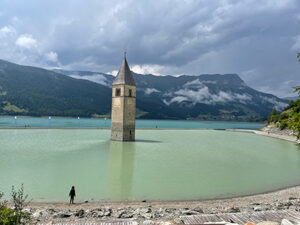
Lago di Resia is a manmade lake in northern Italy, close to the borders of Austria and Switzerland. It is most famous for having one of the most unusual features ever seen in a lake: the steeple of a submerged 14th century church. When the lake water freezes in winter, visitors can walk to see the steeple up close.
The artificial lake – one of the largest in the Alps – was created by an Italian electric utility company to merge two natural lakes and create a dam to provide hydroelectric energy for the region. The plan required the village of Curon Venosta and part of nearby Resia to be demolished and submerged under the new lake. Most residents spoke only German and didn’t understand the Italian directives until it was too late. They were given a nominal payment to abandon their homes and buildings (about 160) and relocate to a new Curon Venosta. The dam’s creation began in 1940 and was completed in 1950.
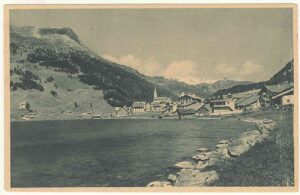
The church steeple was once part of the Church of Santa Caterina d’Allessandria, dating back to 1357. Now emerging bizarrely from the lake, the steeple has become a tourist attraction.
In recent years, Lago di Resia has been the setting for a television series called Curon, an Italian supernatural drama produced for Netflix.
And in 2020, construction crews temporarily drained part of the lake for repairs to the reservoir, revealing part of the demolished village of Curon, with stone steps, cellars and walls spotted in the rubble.
Footnote: We had a wonderful time!
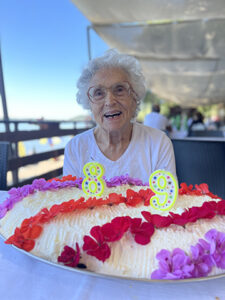
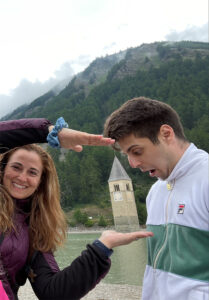
Click here for another feature article about Italy’s beautiful lakes.
And click here for a special Coffee Chat presentation about Italian lakes.
The Italian Cultural Foundation at Casa Belvedere is a not-for-profit organization that celebrates everything Italian by sharing stories such as this, and offering exceptional public programs: Language and cooking classes; art and photo exhibits; film festivals; opera luncheons and casino nights; Italian car shows and fashion shows; live concerts and theatrical performances; guest chef experiences and wine tastings; bocce and bingo (tombola); and much more. Casa Belvedere (house with a beautiful view) has established itself as a vibrant and buzzing cultural center in New York City. For more information, visit casa-belvedere.org.
